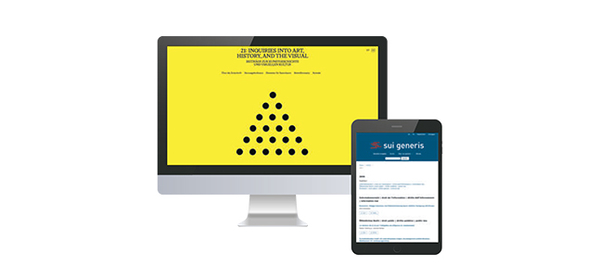“Repositories are no competition”

As of 2020, 100 per cent of all publications from SNSF-funded research were meant to be available in open access mode. The SNSF will not achieve this goal. The President of the Research Council, Matthias Egger, sets out some of the reasons.
In 2019, only 50 per cent of the publications were open access. Hasn’t the SNSF been active enough?
We have been promoting open access for a long time and made it a requirement for researchers in 2008. We have informed regularly and created favourable conditions, but that isn’t enough.
Why?
One important reason concerns scientific journals. Some journals do not allow authors to provide open access to their article after six months at the latest. That is why the SNSF sent an open letter to the larger publishers at the end of 2019. There is no reason why articles should not be available in a digital repository within this six- month timeframe. A repository is merely an archive, whereas a journal is a platform on which researchers share their knowledge – I can’t see any competition there.
There is no such problem with open access journals. Their articles are immediately available free of charge. But what to do if there are no journals of this kind?
That might be the case in a few subdisciplines. But our experience shows that applicants are able to find an open access journal in every discipline. Of course, there isn’t always the same amount of choice. And for this reason, one ought to promote alternative forms of publishing under the national open access strategy. One example of this is the conversion of subscription-based journals into open access journals.
Are there any other reasons why the SNSF is falling short of its goal of 100 per cent?
Many researchers forget to make their article publicly accessible even if the journal allows it. They don’t include open access in their plans from the outset. Now it has to be part of the publication process by default.
How can the SNSF contribute?
We are expediting this change of thinking with different measures. They include publication grants for articles in open access journals, as well as for open access books and book chapters. What’s more, in summer 2019, we began contacting researchers whose publications were not freely accessible and findable.
The EU’s Plan S is also aimed at achieving 100 per cent open access. But the SNSF didn’t sign it./p>
We support Plan S, but we offer our applicants more options. They have six months to store their publication in a public repository. The goal of Plan S, however, is to make all publications available immediate
What changes with open access to government- funded research?
Private and public sector players are able to implement the results more rapidly. Thanks to the published information, the public can participate in scientific debates; and there is more critical reflection of research. This in turn leads to new questions and methods. All this makes science more impactful.
Grants for open access publications
By keeping administration lean and providing comprehensive funding, the SNSF makes it easy for researchers to publish their results in an open access format. For more information, please refer to the open access website: https://oa100.snf.ch.